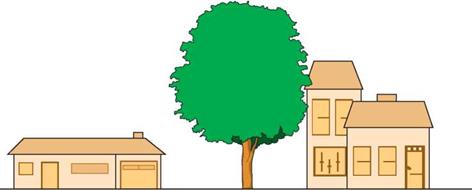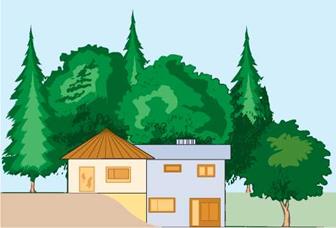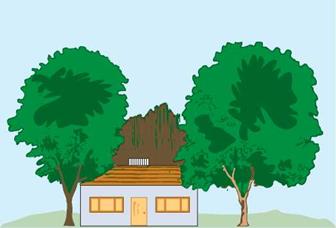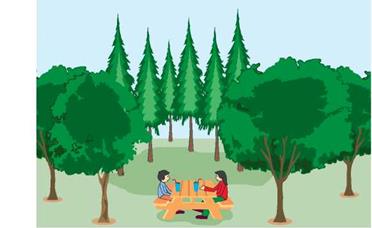The principle of proportion should guide the size relationships between elements of the landscape (Figures 9-13 and 9-14). The designer must envision a mature landscape with comfortable, nonthreatening size relationships between:
• plants and buildings
• plants and other plants
• plants and people
Occasionally, a landscape is larger than human scale and we are comfortable in the setting, as when we picnic in a large park beneath a canopy of towering forest trees. But, in general, the landscape should be designed to be in proportion with the people who will use it and the dwellings they build within it.
Unity
The master principle that gives cohesiveness to the landscape design is unity. If applied properly, the various use areas of the landscape will convey a sense of being pieces of the whole. By maintaining consistency in the choice of the landscape components such as plants, pavings, fixtures, or colors throughout the landscape, the designer creates unity.
|
|
figure 9-13. Proportion: Each element of the landscape must be the proper size relationship with all other elements. (Delmar/Cengage Learning)
![]()
|
|
|
|
|
|
|







